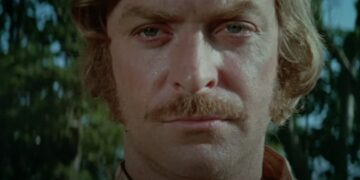Born on November 13, 1850, in Edinburgh, Scotland, Robert Louis Stevenson was a renowned Scottish novelist, poet, and travel writer. His works continue to captivate readers worldwide even today.
Stevenson’s unique writing style and ability to craft captivating narratives have made him a significant figure in literature. This biography aims to delve into the life of Robert Louis Stevenson, exploring his early years, writing career, personal relationships, travels, and the impact he has left on the literary world.
Early Life and Education of Robert Louis Stevenson
Robert Louis Stevenson was born into a family of lighthouse engineers, and his father expected him to follow in his footsteps. However, Stevenson’s passion for writing was awakened at a young age, leading him to pursue a different path. Despite suffering from poor health throughout his childhood, Stevenson’s thirst for knowledge remained unquenchable. He attended the University of Edinburgh, where he studied engineering but soon realized his true calling lay in literature.
Exploring Robert Louis Stevenson’s Writing Career
Stevenson’s writing career took flight with the publication of his first major work, “Treasure Island” in 1883. This adventure novel, filled with pirates, treasure hunts, and a young protagonist named Jim Hawkins, became an instant success.
Stevenson’s ability to create vivid characters and intricate plots captured the imaginations of readers worldwide. His subsequent works, such as “Kidnapped,” “The Strange Case of Dr. Jekyll and Mr. Hyde,” and “The Master of Ballantrae,” further solidified his reputation as a master storyteller.
The Influence of Backbiting and Gossip on Stevenson’s Life
Regrettably, throughout his life, Robert Louis Stevenson faced constant criticism and backbiting from his contemporaries. Although his works were widely appreciated, some members of the literary community dismissed his writing as mere entertainment.
This constant scrutiny took a toll on Stevenson’s mental and emotional well-being. However, he persevered, using his experiences as fuel to create even more compelling narratives.
Criticism Faced by Robert Louis Stevenson
Despite his immense talent and popularity, Robert Louis Stevenson was not exempt from criticism. Some critics labeled his writing as too commercial or lacking depth. However, many modern literary scholars recognize the complexity and underlying themes within his works. Stevenson’s ability to explore the duality of human nature, as seen in “Dr. Jekyll and Mr. Hyde,” and his insightful commentary on society’s moral decay in “The Strange Case of Dr. Jekyll and Mr. Hyde” are testament to his literary prowess.
Love Life and Friendships of Robert Louis Stevenson
Robert Louis Stevenson’s personal life was filled with love and strong friendships. He met his future wife, Fanny Van de Grift Osbourne, in France, and their relationship blossomed into a deep and enduring love.
Their marriage was marked by numerous adventures and travels, which greatly influenced Stevenson’s literary works. Additionally, Stevenson formed meaningful friendships with other prominent writers of his time, including Henry James and Bram Stoker, who greatly influenced his writing and provided him with much-needed support.
Life Outside of Writing: Stevenson’s Travels and Adventures
Stevenson’s thirst for adventure was not limited to the pages of his books. Throughout his life, he embarked on numerous travels, seeking inspiration and exploring different cultures. His trips to the South Seas, particularly his time in Samoa, had a profound impact on him.
Stevenson immersed himself in the local culture, becoming an advocate for the rights of the indigenous Samoan people. His experiences abroad greatly enriched his writing and broadened his perspective on life.
Robert Louis Stevenson: Rich or Poor?
Contrary to popular belief, Robert Louis Stevenson’s financial situation was often precarious. Despite his success as a writer, he faced numerous financial difficulties throughout his life.
His travels and the expenses associated with his poor health often left him in debt. However, Stevenson’s determination to continue writing and his unwavering passion for his craft allowed him to overcome these challenges and leave a lasting legacy.
Unveiling Stevenson’s Best Quotes
Robert Louis Stevenson’s eloquence and ability to capture the essence of human experience are evident in his memorable quotes. Some of his best-known lines include:
- “Don’t judge each day by the harvest you reap but by the seeds that you plant.”
- “I travel not to go anywhere but to go. I travel for travel’s sake. The great affair is to move.”
- “The world is so full of a number of things, I’m sure we should all be as happy as kings.”
These quotes offer a glimpse into Stevenson’s profound understanding of life and his ability to express complex emotions in simple yet powerful words.
The Main Places Where Stevenson’s Books Are Set
Stevenson’s books often transport readers to intriguing and exotic locations. The main places where his stories are set include:
- Scotland: Many of Stevenson’s works are set in his native Scotland, such as “Kidnapped” and “The Master of Ballantrae.” These novels showcase the stunning landscapes and rich history of the Scottish Highlands.
- The South Seas: Stevenson’s time in the South Seas, particularly Samoa, greatly influenced his writing. “Treasure Island” and “The Beach of Falesá” are examples of his works set in these captivating tropical locales.
Stevenson’s ability to bring these settings to life through his vivid descriptions adds depth and authenticity to his narratives.
Robert Louis Stevenson’s Best Books
Throughout his career, Robert Louis Stevenson produced a remarkable body of work. Some of his best-known books include:
- “Treasure Island”: This timeless adventure novel has captured the hearts of readers for generations and remains one of Stevenson’s most beloved works.
- “Kidnapped”: Set against the backdrop of 18th-century Scotland, this gripping tale of friendship and betrayal has become a classic in its own right.
- “Dr. Jekyll and Mr. Hyde”: This novella explores the duality of human nature and the consequences of repressing one’s darker impulses. It continues to be influential in the realm of psychological fiction.
These books showcase Stevenson’s storytelling prowess and his ability to create enduring characters and narratives.
The First and Last Books Written by Stevenson
The first book written by Robert Louis Stevenson was “The Pentland Rising: A Page of History, 1666,” published in 1866. This historical novel was inspired by the Jacobite uprising in Scotland. Stevenson’s final completed work was “Weir of Hermiston,” a novel set in 19th-century Scotland. Unfortunately, Stevenson passed away before he could finish the manuscript, leaving it as a fragment of his literary genius.
Books or Characters by Stevenson that Became Movies or Other Media
Robert Louis Stevenson’s works have inspired numerous adaptations in various forms of media. Some notable examples include:
- “Treasure Island”: This iconic novel has been adapted into numerous films, including the 1950 Disney version and the 1996 film starring Charlton Heston.
- “Dr. Jekyll and Mr. Hyde”: Stevenson’s exploration of the duality of human nature has been brought to the silver screen in multiple adaptations, with notable portrayals by actors such as Fredric March and Spencer Tracy.
These adaptations are a testament to the enduring appeal of Stevenson’s stories and their ability to captivate audiences across different mediums.
Other Artists Who Inspired Robert Louis Stevenson
Robert Louis Stevenson drew inspiration from various artists and writers of his time. One notable influence was the French novelist, Charles Dickens. Stevenson admired Dickens’ ability to create memorable characters and intricate plots. Additionally, the works of Edgar Allan Poe and Henry David Thoreau played a significant role in shaping Stevenson’s writing style and themes.
Other Writers to be Read Absolutely in Context of Stevenson
To fully appreciate the context and impact of Robert Louis Stevenson’s works, it is essential to explore the writings of his contemporaries. Some authors whose works align with Stevenson’s include:
- Joseph Conrad: Conrad’s exploration of human nature and his captivating storytelling make him a fitting companion to Stevenson’s works.
- Bram Stoker: As a friend and contemporary of Stevenson, Stoker’s chilling tales, particularly “Dracula,” share thematic similarities with Stevenson’s exploration of the dark side of humanity.
By reading these authors alongside Stevenson, readers can gain a deeper understanding of the literary landscape of the time and the unique contributions made by each writer.
Conclusion: Robert Louis Stevenson’s Legacy and Impact
Robert Louis Stevenson’s legacy as a master storyteller and literary trailblazer is undeniable. His ability to transport readers to distant lands, explore the complexities of human nature, and craft captivating narratives continues to resonate with audiences worldwide.
Despite facing criticism and personal hardships, Stevenson remained dedicated to his craft, leaving behind a body of work that continues to inspire and enchant readers to this day. As we delve into the enigmatic life of Robert Louis Stevenson, we discover a man who embraced adventure, defied societal expectations, and forever changed the landscape of literature. Let us celebrate his legacy and continue to explore the wonders of his imagination.
Fuel our passion by treating us to a coffee or enrich your collection with the captivating books of Robert Louis Stevenson on Amazon through this link.
Join the WFTS revolution and champion the enduring allure of books with us! We’re committed to keeping your experience ad-free and authentically engaging.
Step into our world, where we value substance over flash, and keep the magic of books alive.












